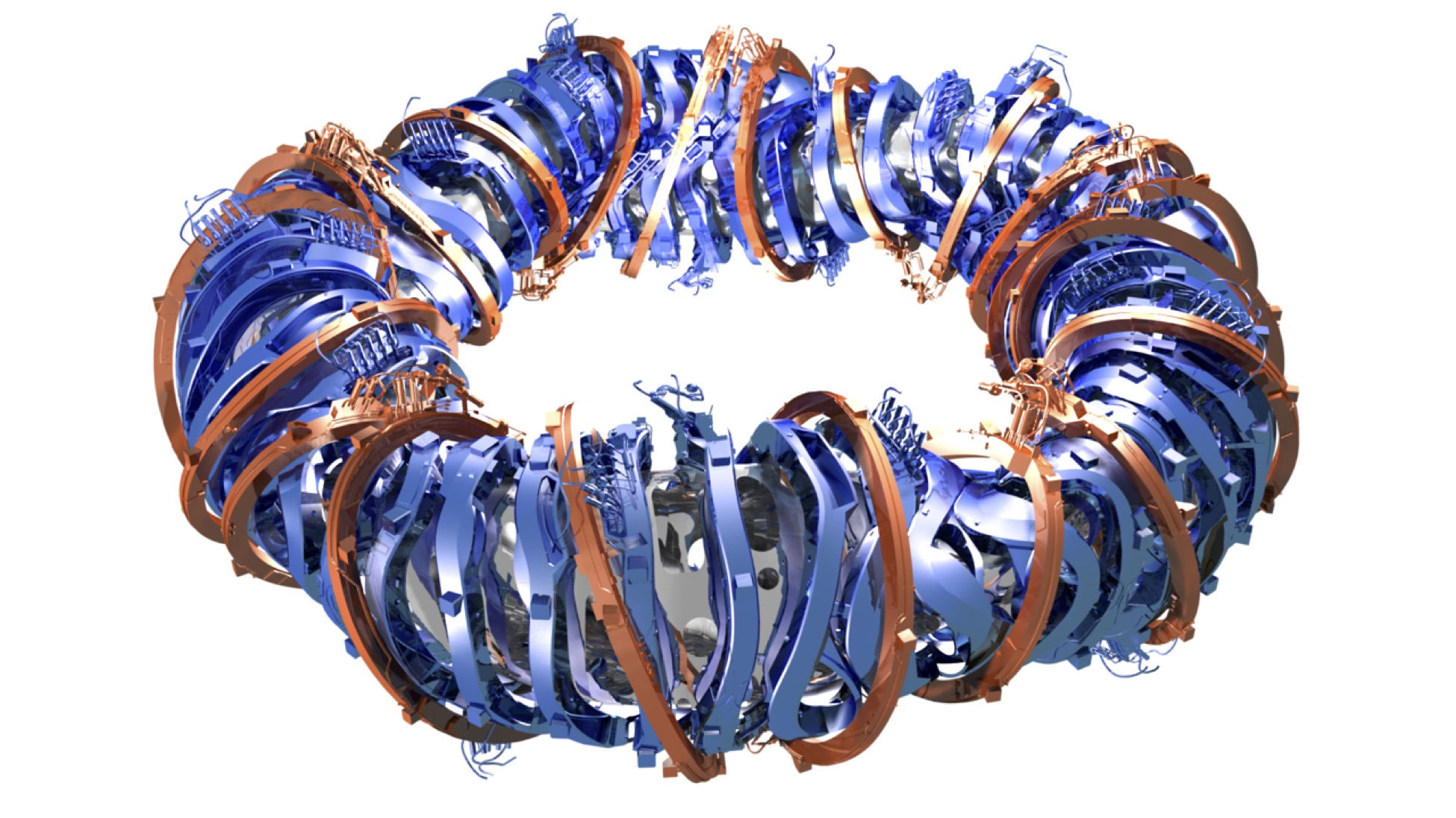 Currently LPP-ERM/KMS is developing an ICRH antenna for the stellarator W7-X. The main aim of the ICRH system for W7-X is generating fast ions (with energies of ~ 60-80 keV) in order to demonstrate that a stellarator is able to confine this kind of fast particles. In addition, the antenna also provides a heating and current drive tool for short periods, complementing the steady-state ECRH-system. The system can also serve as an Ion Cyclotron Wall Conditioning (ICWC) system.
Currently LPP-ERM/KMS is developing an ICRH antenna for the stellarator W7-X. The main aim of the ICRH system for W7-X is generating fast ions (with energies of ~ 60-80 keV) in order to demonstrate that a stellarator is able to confine this kind of fast particles. In addition, the antenna also provides a heating and current drive tool for short periods, complementing the steady-state ECRH-system. The system can also serve as an Ion Cyclotron Wall Conditioning (ICWC) system.
One of the main aims of the W7-X device is demonstrating the reactor potential of stellarators. It is therefore crucial to show that an optimized stellarator configuration can provide sufficient confinement of fast alphas. Scaling down HELIAS reactor parameters to the W7-X parameter range one finds that this is equivalent by showing that fast protons with energies of ~ 60 keV or fast Helium-3 ions with energies of ~ 80 keV are well confined. The main aim of the ICRH system for W7-X is precisely generating such tails. In addition, it also provides a heating and current drive tool for short periods, complementing the steady-state ECRH. The system can also serve as an Ion Cyclotron Wall Conditioning (ICWC) system.
Providing a sufficiently large fast particle tail with the usual ICRH heating schemes would require low density plasmas (a few times 10^19 m-3). However, LPP-ERM/KMS sees the possibility to provide even at the highest densities (of the order of 10^20 m-3) fast particle tails with energies between 50-100 keV (with potential for even higher energies if that would be required in later experiments), using a novel three ion species ICRH heating scheme. The specific advantage of ICRH is the absence of a cut-off at high density, allowing applications beyond the capabilities of standard ECRH in the magnetic topology of a stellarator.
This project is co-funded by the “Energy Transition Fund” of the FOD/SPF Economie.
Recent publications
1. Contribution at the 29th IAEA Fusion Energy Conference (FEC 2023), 16-21 October 2023, London, United Kingdom
Reference: ” Development, Construction and First Experimental Results of the ICRH System Wendelstein 7-X” by J. Ongena et al., Contribution IAEA-CN-316/EX-H/P8-1932 (download full paper)
2. Invited contribution at the 7th Asia-Pacific Conference on Plasma Physics held in Nagoya November 12-17, 2023, Port Messe Nagoya, Japan
Reference: ” Overview of the design and first experimental results of the ICRH system for the large optimized stellarator Wendelstein 7-X” (abstract)
Contribution MF-16-12, in Topical Session MF-16 Heating and Current Drive
3. Poster Contribution at the 50th EPS Conference on Plasma Physics 2024, 8 – 12 July 2024 Salamanca, Spain (Contribution P1-073)
Reference: “First results and upgrade of the ICRH antenna system for W7-X”, by J. Ongena et al. (abstract)
4. Invited Plenary Talk at the opening session of the 21st International Congress on Plasma Physics, Gent 9-13 september 2024
“Overview and Initial Results of the ICRH Antenna for the Optimized Stellarator Wendelstein 7-X” by J. Ongena et al. (abstract)
Last updated: 20 October 2024